Article "Mnemotechnical Techniques in the Work of a Technology Teacher
Kuryazova Sanabar Ibragimovna
Memory is the foundation of our consciousness, allowing us to remember what we see, hear, or do. As a result, whatever is stored in the past is reproduced in the future.
I was introduced to mnemotechnics at the Genius X training in Tashkent. I became very interested in this technique. I began to study the technique on the Internet and gathered some good instructive ideas. I used it in my lessons, at a city conference, and in my classes at the support school. Indeed, mnemotechnics is a technique for developing thinking. The main thing - the technique helps you easily absorb the material you've learned.
The art of memorization was developed by medieval monks, who had to remember a huge number of liturgical texts. During the Renaissance, knowledge came to be considered a power, and the ability to keep knowledge in one's head was valued very, very highly. But what was the secret of these men? How did they recite speeches for hours without stuttering, remembering huge formulas and texts?
They used a special method of remembering information - mnemotechnics. Over the centuries it has undergone tremendous change, but its essence remains the same. The technique, which allows you to quickly and efficiently memorize large amounts of information has existed for over 2500 years.
But at the same time there is a paradox: why, when there is effective technology, it takes a child 3 weeks to memorize the countries of Europe, when it is done in 30 minutes? Why do people spend weeks to memorize the rules of the road instead of one evening? Why should a child go all day long to memorize a poem when it can be done in a few simple steps and get a good grade? Why cram the multiplication table when it can be understood and learned in two evenings? Why learn definitions and formulas when you can easily memorize them using mnemotechnics?
Effective learning techniques, primarily mnemotechnics, simply need to be integrated into our educational system.
Mnemotechnics are a set of techniques, methods for remembering information more easily. In simple words, these are special techniques for remembering difficult and complex information.
Mnemotechnics is a system of methods and techniques for effectively remembering, storing, and playing back information, and of course, developing speech. Mnemonics, or mnemotechnics, - a system of different techniques, facilitating memorization and increasing the volume of memory by forming additional associations, the organization of the educational process in the form of a game. The use of mnemotechnics is currently becoming relevant. The basic "secret" of mnemotechnics is very simple and well known. When a person in his imagination combines several visual images, the brain fixes this relationship. And in the future, when recalling one of the images of this association, the brain reproduces all the previously connected images.
This technology has:
1.Theoretical basis - based on the notion of a complex and active nature of memory processes, relying on a number of jointly working brain cortical apparatuses in humans, it opens up wide possibilities for more effective memorization of text by children, even, most importantly, children with developmental problems
2.Forms imagination, an understanding of what one hears; the ability to retain incoming information in memory;
3. Develops figurative thinking, children's creative abilities, and visual memory.
Distinctive features of the technology:
-has a clear theoretical and experimental justification;
-the memorization methods are individualized;
-figurative codes are widely used, providing fast memorization;
-The concept of "memorization skill" is introduced and an accurate system for controlling memorization skill is developed.
Mnemotechnics helps to develop:
- associative thinking
- visual and aural memory
- visual and auditory attention
- imagination
Learning Objective:
- Development of coherent speech;
- transforming abstract symbols into images (recoding information);
- development of fine motor skills of hands;
- development of basic mental processes - memory, attention, figurative thinking;
- helps to master the methods of work with mnemotables and reduces training time.
Preliminary work:- vocabulary development (technological expressions);- handout material;- discussion with children about the observations of the world around them;- choice of techniques, with which you can interest the children.
A mnemotable is a scheme in which certain information is embedded. As any work is built from the simple to the complex.
Mnemotables can be subject, subject - schematic and schematic. If the children cope with the subject model, the task becomes more complicated: the subject - schematic model is given. This type of mnemotables includes fewer images. And only after that is given a schematic mnemotablitsa.
Work in classes on mnemotables consists of three stages.
Stage 1: Examination of the table and analysis of what is shown on it.
Stage 2: The information is recoded, i.e., the transformation from abstract symbols of words into images.
Stage 3: After recoding, a retelling of the fairy tale or a story on a given topic is performed. In the younger grades with the help of the teacher, in the older - children should be able to independently.
Technology is the basis for the development of thinking, imagination, intellectual and creative abilities of students, the basis for self-realization of personality, the development of the ability to independently learn new knowledge and skills, including the organization of learning activities.
Technology is inextricably linked to all school subjects, affects the quality of their learning, and subsequently the quality of mastering professional skills. Currently, we are faced with the fact that the amount of information increases every day. In this flow it is very difficult to navigate.
People are increasingly unable to concentrate quickly, to remember what they need, and to sift out the secondary material. Some children have a lot of trouble remembering technology instructional material, and they are increasingly having problems. But problems can be avoided by not relying solely on rote memorization as the only way to memorize.
Our goal is to teach students to be fluent in monologic and dialogic speech, to bring every lesson closer to the natural conditions of communication, and to use such methods and techniques that will make the material more visual and easier to memorize, which is difficult to do.
Why can't some children memorize the content of a text or a poem, rules, but they easily and quickly memorize the plots of movies and cartoons? Even after the explanation of new material, some students remember the content of the text, while others do not. How can we keep our attention, memory, and make memorization easy and quick to absorb?
The question arises, are there special methods and techniques that can be used to develop students' memory and speech?
I have been using the technique of developing memory in my work for more than two years. From my own experience, I have seen that a system of reference signals - mnemotables, mnemo-tracks, etc. - is very relevant and useful.
What is mnemotechnics?
Mnemotechnics (from the Greek - the art of remembering) - is a set of methods and techniques that provide effective memorization, storage and reproduction of information and develops speech.
Methods of mnemotechnics, many people remember from childhood, for example, a technique, which allowed you to remember the sequence of colors in the rainbow: "Every hunter wants to know where the pheasant sits," who at least once heard this phrase, he will never forget it.
The purpose of teaching using mnemotechnics is to develop imaginative, logical memory of students through a system of work with the use of various mnemotechnics techniques.
The mnemonic technique helps to develop associative thinking, visual and auditory memory, attention, and imagination. The use of reference pictures to teach memorization of poems captivates children and turns the lesson into a game. The visual image retained by the students after listening, accompanied by viewing drawings, allows them to quickly memorize the text. Students should be given colored mnemotables, because they retain certain images in their memory: the chick is yellow, the mouse is gray, the herringbone is green.
In my work, I widely use mnemotables. This is a scheme that contains certain information in the form of pictures, drawings.
How do I make a mnemotable? For each word or phrase chosen picture and the whole text is "written down" schematically. You can "write down" a text, a proverb, a riddle, using a picture. Looking at the pictures, junior and senior students reproduce the content.
The chart is a visual outline that helps the child recreate what they have heard.
The mnemotable is built using the "simple to complex" method. The table should begin with the simplest mnemo-squares, gradually complicating them with mnemotables, mnemo-tracks.
Based on the methods of teachers and materials of Internet sites, developed mnemotablitsy for memorizing and mnemo-tracks for retelling the content of texts.Such schemes (squares) in the lessons perform the role of visual material, which is a complete text material in the form of a graphic image.
The technique of mnemotechnics is an uncomplicated method for the development of speech. Sometimes students are intimidated by the large volume of text content, it seems to them that they will never be able to retell it. But gradually they realize that it is easy to retell from pictures, especially if a large text is given in blocks. They don't have to memorize anything, they just have to "read" the pictures.
Mastering the techniques of working with mnemotables significantly reduces training time and simultaneously solves the following problems:
- Develop memory, attention, perception, observation, thinking;
- "reading";
- developing logical thinking;
- developing imaginative thinking;
- the ability to think coherently, make up stories,
to recode information;
- the vocabulary and knowledge of the surrounding world is expanding;
- skills of correct graphic representation are formed;
- the students' creative abilities and imagination are developed. Its effectiveness lies in the fact that at the lesson a large coverage of students as strong, as well as low achievers, the latter especially show interest in technology, develop speech, memory, enrich knowledge. Such types of work improve the system of questioning, make it possible to cover all students and increase the quality of knowledge by constantly expanding and deepening it.
Thus, in one lesson students build a monological statement with the support of the mnemotor. This intensifies learning activities and enriches students' vocabulary.
Gradually weaker students acquire the ability to "read" tables and charts.
Scheme as a form of visualization in learning is not so much an illustration, which is given in parallel with the oral presentation of theoretical material, as a key to solving practical problems. Scheme attracts by the simplicity of drawing up and simplicity of application. It is appropriate at different stages of the lesson: when explaining new material, when introducing spelling rules, in consolidation and repetition of educational material. I would also like to present to your attention another wonderful type of work, developing visual memory, logical thinking, independence, search and creative activity of students - making an intellectual map.
Positive effects of mnemotechnics classes are as follows: - better development of visual thinking; - development of steady attention (ability to concentrate for a long time); - formation of ability to effective independent learning.
Thus, with the help of mnemotables, schemes-models we managed to achieve the following results: children increased the range of knowledge about the world around them; a desire for independent activity appeared; interest in performing tasks from a variety of materials appeared; vocabulary reached a higher level; children overcome shyness, shyness, learn to feel free in front of the class.
At the initial stage, it is useful to use V. Vorobyeva's sensory-graphic diagrams reflecting the sensory channels for receiving information about the features of objects (visual, olfactory, tactile, and gustatory) and the features themselves. For example, when looking at an apple children were offered the following questions:
- What will help us see an apple - its shape, color, size? That's right, the eyes (a card with the image of an eye is placed on the board). We looked at the apple and saw that it is red (a card showing red is placed on the board) and round (a card showing a circle).
In the same way, the corresponding symbols of size, taste and others are placed on the chart.
A visual diagram is a flow chart of any product or process.
The child knows where he or she should begin, how to continue and refine his or her story and how to finish it. This is achieved by using certain symbols denoting various features of objects.
For example:
- color - children draw spots of color;
- shape - children name what shape the object itself or its parts have;
- magnitude - children draw two objects of contrasting sizes;
- person - what the object is for and how the person takes care of it;
- outline of details of the object - details of the object are marked;
- hand - what actions are performed with this object;
- question mark - the name of the object or object;
- exclamation mark - emotions and feelings this object evokes.
Conclusion.
Today it is important to teach students mnemotechnical methods, so that the learning process, including the technology lesson was fun and productive. And here interaction of the basic and additional education becomes especially important.
In the work of the teacher of technology I use verbal methods (explanation, explanation, story, conversation); visual (illustration, demonstration). I widely use subject-practical activities in the classroom. Practice has shown that most children perform them faster and better when making a product, using mnemotables. Gradually, the figurative thinking of students has become stronger, their skills are developing, and they remember the sequence of making a product much better, more in volume, easier and more emotional.
Conclusion.
Using visual modeling in our work we teach children: to obtain information, to conduct research, to make comparisons, to make a clear internal plan of mental actions, to make a speech statement; to formulate and express judgments, to make conclusions; the use of visual modeling had a positive impact on the development of non-verbal processes: attention, memory, thinking.
It is possible to conclude that by analyzing new material and marking it graphically, the child (under the guidance of adults) learns independence, assiduity, visually perceives the plan of his or her actions. He or she has a heightened sense of interest and responsibility, is satisfied with the results of his or her work, improves mental processes such as memory, attention, thinking, which positively affects the effectiveness of correctional work.
The use of visual modeling in the system of remedial work gives positive results, which is confirmed by diagnostics of the overall development of children.
From all of the above it is possible to draw a conclusion: the method of visual modeling can and should be used in the system of work with children of primary school age, and in work with children in high school.
List of references:
1. Francis Yeats, The Art of Memory. 1997 2. Matyugin I. Yu "Methods of development of memory, figurative thinking, imagination. 1996. 3. V. Kozarenko. "Mnemotechniques. Memories on the basis of visual thinking. 2000. 4. Materials of Internet sites: Technology of development of memory and its application in pedagogical practice. Mnemonic technique as a means of developing students' memory.

 Получите свидетельство
Получите свидетельство Вход
Вход




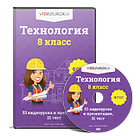
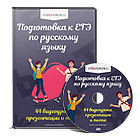

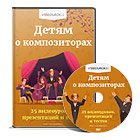

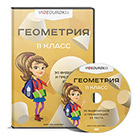
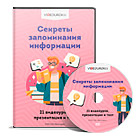
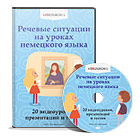
 Mnemotechnical Techniques in the Work of a Technology Teacher (14.3 KB)
Mnemotechnical Techniques in the Work of a Technology Teacher (14.3 KB)
 0
0 423
423 0
0 Нравится
0
Нравится
0


